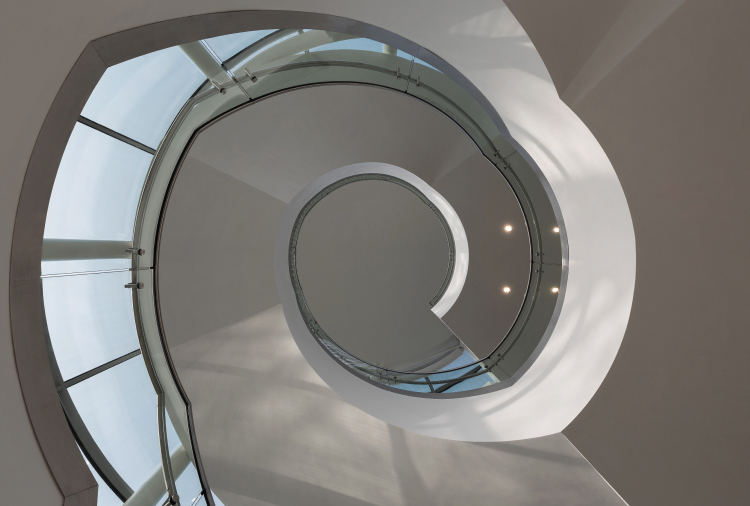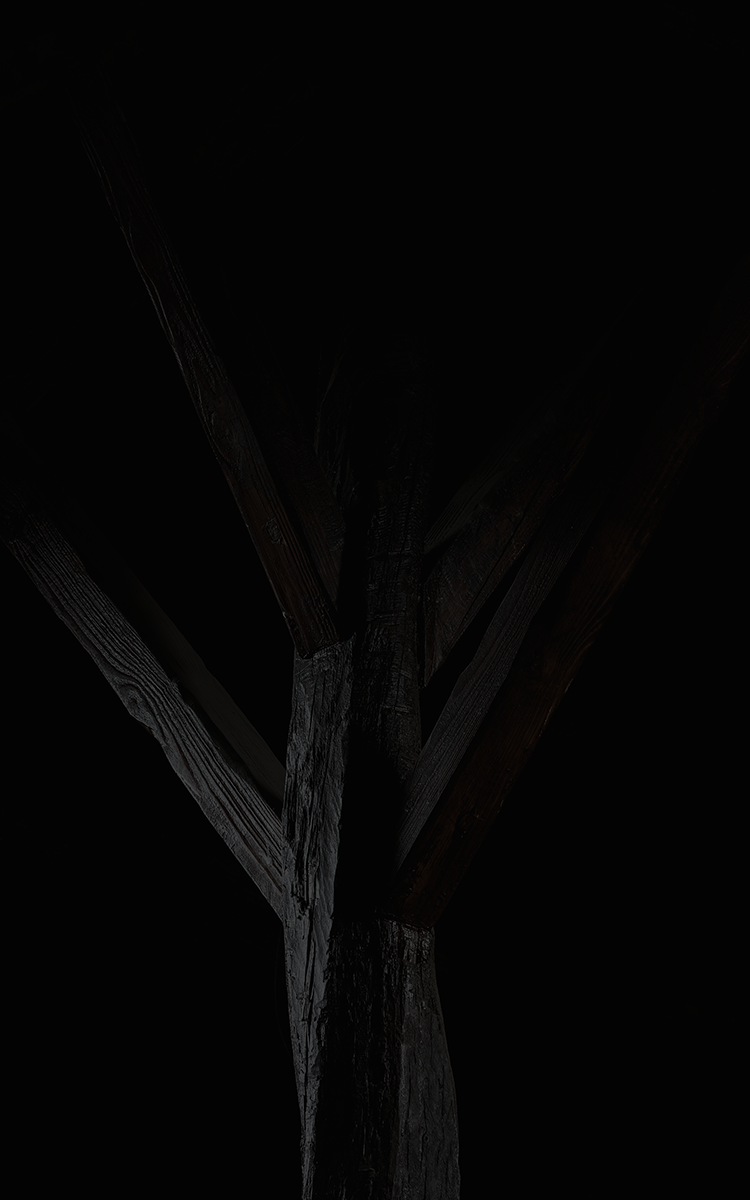
HISTORY

Past and present
From the 16th to the 19th century
From “Domaine de Bages”
to “Cru de Lynch”
to “Cru de Lynch”
The first writings that mention the lands of “Batges” date back to the 16th century. Located at the entrance of Pauillac, these lands were home to generations of wine growers for centuries.
In the first half of the 17th century, Jean Déjean, a royal notary, and his brother Pey, a wine merchant living in the village of Bages, began to group the plots surrounding the hamlet.
The next generation with Pierre Déjean, also a royal notary, and his son Bernard, a merchant and bourgeois from Bordeaux, completed the creation of the Domaine de Bages.
In the 18th and 19th centuries, the Irishman Lynch gave the estate a new dimension. John Lynch left Galway and took refuge in Bordeaux in 1691. His son, Thomas, acquired the Domaine de Bages on 9 June 1750 through his marriage to the daughter of Pierre Drouillard. Their son, Michel Lynch, understood the importance of the terroirs, selected the best grape varieties, systematically drained the soils, and invented new tools to cultivate the vines.
The estate remained in the Lynch family for seventy-five years.
In the first half of the 17th century, Jean Déjean, a royal notary, and his brother Pey, a wine merchant living in the village of Bages, began to group the plots surrounding the hamlet.
The next generation with Pierre Déjean, also a royal notary, and his son Bernard, a merchant and bourgeois from Bordeaux, completed the creation of the Domaine de Bages.
In the 18th and 19th centuries, the Irishman Lynch gave the estate a new dimension. John Lynch left Galway and took refuge in Bordeaux in 1691. His son, Thomas, acquired the Domaine de Bages on 9 June 1750 through his marriage to the daughter of Pierre Drouillard. Their son, Michel Lynch, understood the importance of the terroirs, selected the best grape varieties, systematically drained the soils, and invented new tools to cultivate the vines.
The estate remained in the Lynch family for seventy-five years.
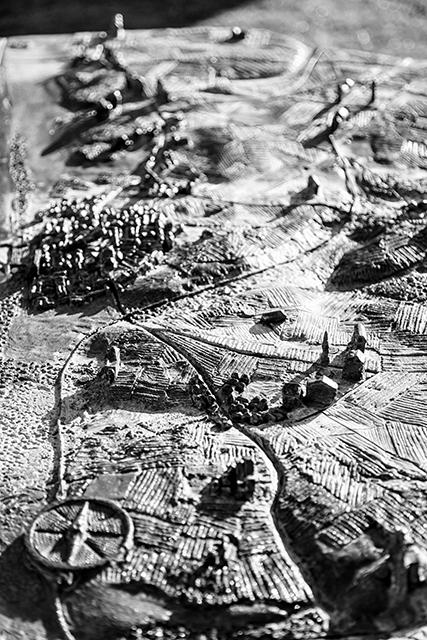
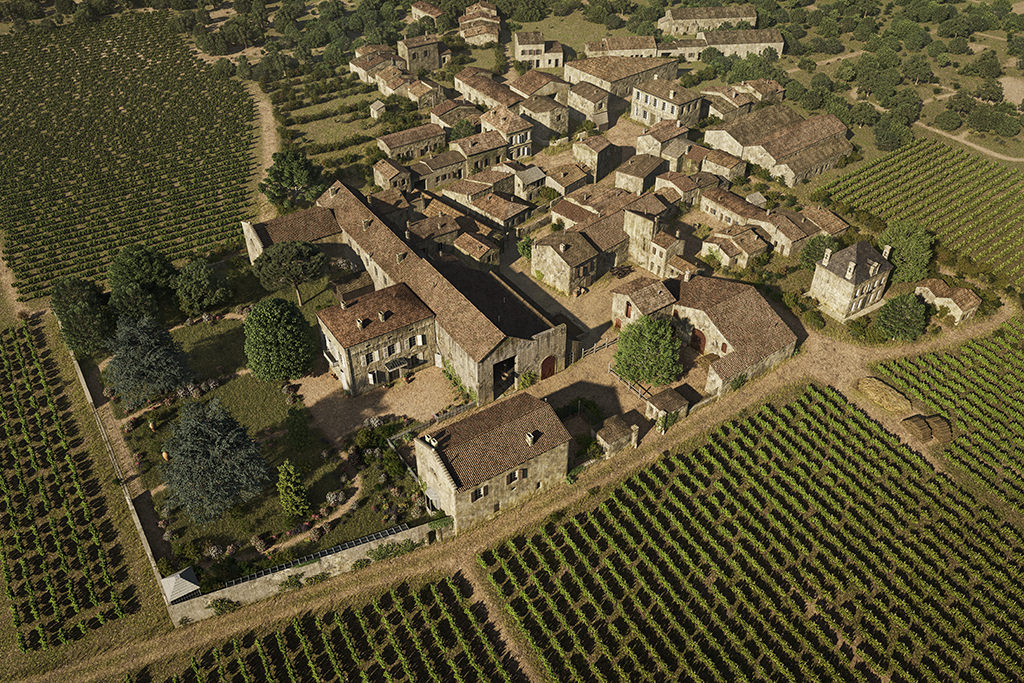
The 19th century technical revolution
In the footsteps
of Skawinski
of Skawinski
In the 19th century, wine growers in Bordeaux
began adopting new cultivation techniques, and
their winemaking methods progressed in leaps
and bounds.
A key figure in this technical revolution was
Pierre Skawinski, the inventor of the two-storey
vat room where grapes were hoisted using a winch,
and poured into a mobile crusher installed on
the upper level. Rails then positioned the device
in front of each vat. For the first time, wine producers
used gravity to manage grapes.
In 1866, Lynch-Bages’ new owner, Jérôme Cayrou,
also built a “new system” vat house on the advice
of Pierre Skawinski.
Learn more began adopting new cultivation techniques, and
their winemaking methods progressed in leaps
and bounds.
A key figure in this technical revolution was
Pierre Skawinski, the inventor of the two-storey
vat room where grapes were hoisted using a winch,
and poured into a mobile crusher installed on
the upper level. Rails then positioned the device
in front of each vat. For the first time, wine producers
used gravity to manage grapes.
In 1866, Lynch-Bages’ new owner, Jérôme Cayrou,
also built a “new system” vat house on the advice
of Pierre Skawinski.
The 19th century facility is still present today, miraculously intact and carefully preserved. Used until 1976, it paints a complete picture of the winemaking techniques of the period.
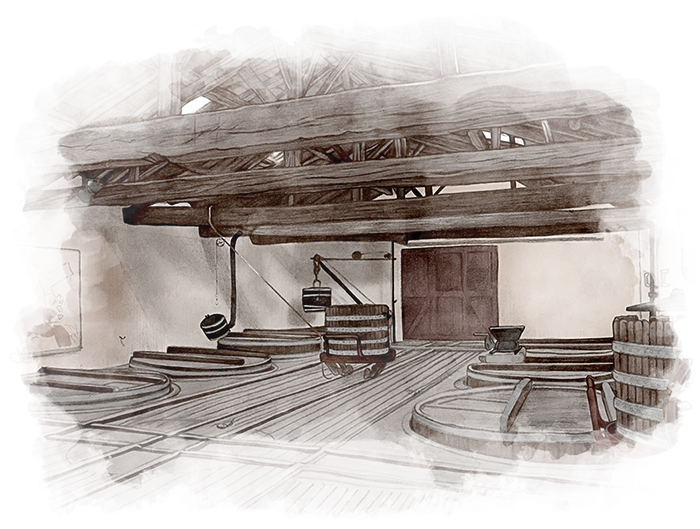
The 19th century facility is still present today, miraculously intact and carefully preserved. Used until 1976, it paints a complete picture of the winemaking techniques of the period.
The Cazes family: four generations
From the Ariège region to the vineyards of the Médoc
Our family story replete with stubborn, straightforward characters, chance meetings and far-flung voyages, seems to be a reflection of the Médoc – the land that made us and that we call home. As we have been touched by the passion and persistence of our predecessors, wine is a family lifestyle that we strive to cherish and pass from one generation to another.
Our ancestor, Jean “Lou Janou”, left the valleys of Couserans, near Saint-Girons, in the Ariège region of southwest France around 1875 to take root in Pauillac and find work there.
Jean-Charles Cazes, who was born in Pauillac, found after the 1929 Crash, that he was able to buy a local wine estate: Lynch-Bages. He proved to be a good winemaker. Lynch-Bages’ unique style came into its own upon his arrival at the head of the domaine in 1934.
While at the same time working for an insurance firm, his son, André, continued his father’s mission at Lynch-Bages and restored the vineyard. He was one of the first to promote Bordeaux wines abroad.
Jean-Michel, who worked as an engineer in Paris, joined his father André in 1973. The wine industry then experienced a new crisis, and the facilities suffered from severe underinvestment. In 1975, Jean-Michel began working on what had become essential modernisation work, which lasted some fifteen years. The Lynch-Bages style began to assert itself and the wines gained in finesse and regularity.
In 2007, Jean-Charles takes over the family estates and launches a renovation project with architect Chien Chung (Didi) Pei. Marking four centuries of history and the culmination of four years’ hard work, the 2020 vintage, the first in the renovated cellars, has opened a new chapter in the life of the estate.
Our ancestor, Jean “Lou Janou”, left the valleys of Couserans, near Saint-Girons, in the Ariège region of southwest France around 1875 to take root in Pauillac and find work there.
Jean-Charles Cazes, who was born in Pauillac, found after the 1929 Crash, that he was able to buy a local wine estate: Lynch-Bages. He proved to be a good winemaker. Lynch-Bages’ unique style came into its own upon his arrival at the head of the domaine in 1934.
While at the same time working for an insurance firm, his son, André, continued his father’s mission at Lynch-Bages and restored the vineyard. He was one of the first to promote Bordeaux wines abroad.
Jean-Michel, who worked as an engineer in Paris, joined his father André in 1973. The wine industry then experienced a new crisis, and the facilities suffered from severe underinvestment. In 1975, Jean-Michel began working on what had become essential modernisation work, which lasted some fifteen years. The Lynch-Bages style began to assert itself and the wines gained in finesse and regularity.
In 2007, Jean-Charles takes over the family estates and launches a renovation project with architect Chien Chung (Didi) Pei. Marking four centuries of history and the culmination of four years’ hard work, the 2020 vintage, the first in the renovated cellars, has opened a new chapter in the life of the estate.
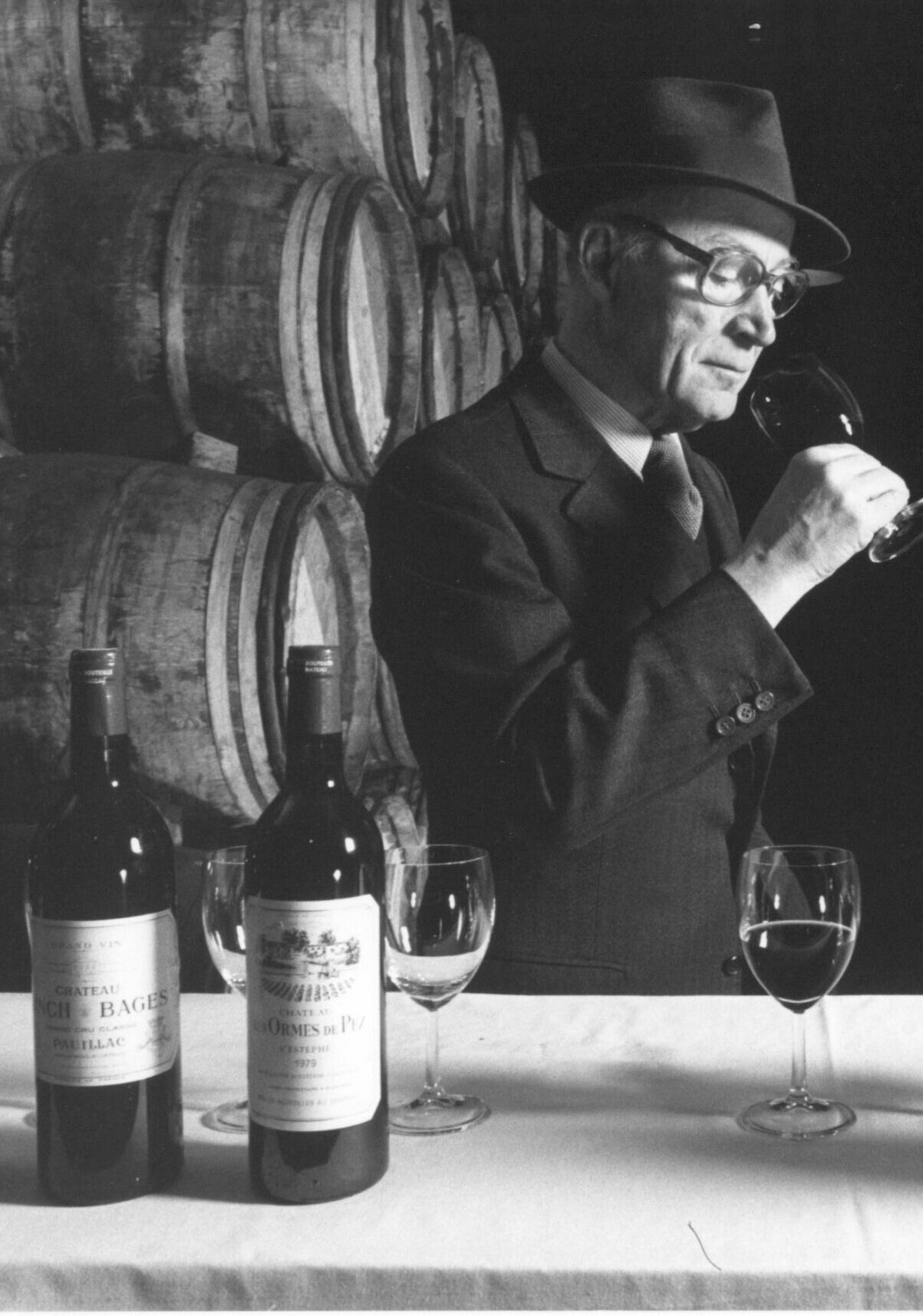
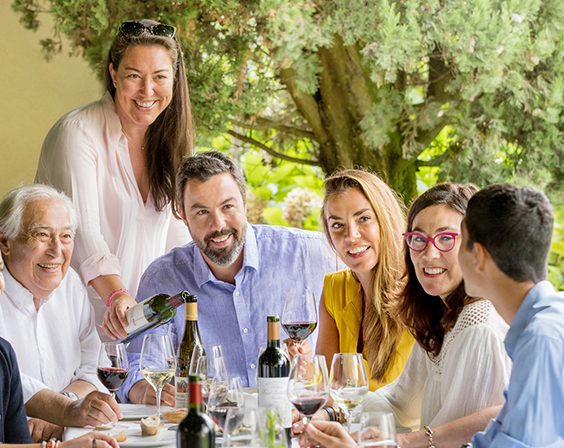
From the 16th century to today
Key dates
1600-2022
Domaine de Bages
1600
The first writings that mention the lands of “Batges” date back to the 16th century. Located at the entrance of Pauillac, these lands were home to generations of wine growers for centuries.
Jean Déjean, a royal notary, and his brother Pey, a wine merchant living in the village of Bages, began to group the plots surrounding the hamlet in the first half of the 17th century.
The next generation with Pierre Déjean, also a royal notary, and his son Bernard, a merchant and bourgeois from Bordeaux, completed the creation of the Domaine de Bages.
Jean Déjean, a royal notary, and his brother Pey, a wine merchant living in the village of Bages, began to group the plots surrounding the hamlet in the first half of the 17th century.
The next generation with Pierre Déjean, also a royal notary, and his son Bernard, a merchant and bourgeois from Bordeaux, completed the creation of the Domaine de Bages.
From “Domaine de Bages” to “Cru de Lynch”
1750
In the 18th and 19th centuries, the Irishman John Lynch gave the estate a new dimension. Originally from Galway, he took refuge in Bordeaux in 1691 following the defeat of the Irish Catholics at the Battle of the Boyne.
His son Thomas, acquired Domaine de Bages on 9 June 1750 through his marriage to the daughter of Pierre Drouillard, Treasurer General of Guyenne, who had made his fortune in Bordeaux in the insurance and shipping industry.
Thomas’ son, Michel Lynch, understood the importance of terroirs, selected the best grape varieties, systematically drained the soils, and invented new tools to cultivate the vines, and produced high quality wines under the name of “Cru de Lynch”.
His son Thomas, acquired Domaine de Bages on 9 June 1750 through his marriage to the daughter of Pierre Drouillard, Treasurer General of Guyenne, who had made his fortune in Bordeaux in the insurance and shipping industry.
Thomas’ son, Michel Lynch, understood the importance of terroirs, selected the best grape varieties, systematically drained the soils, and invented new tools to cultivate the vines, and produced high quality wines under the name of “Cru de Lynch”.
Jean Cazes, the “montagnol”
1875
The Cazes family are originally from the small village of Montégut-en-Couserans in the Ariège region, in the heart of the central Pyrenees.
In the second half of the 19th century, mountain dwellers, shepherds or farmers, often chose to emigrate from the high valleys of the Ariège to milder regions.
That is how in 1875, Jean (“Lou Janou”) Cazes and his wife Angélique left behind their mountains, their goats, and their pastures, and emigrated to Pauillac.
At that time, the phylloxera invasion caused the loss, then the replanting of the vineyard and gave work for a long time to thousands of workers from the Ariège, who came to clear and replant the Médoc.
In the second half of the 19th century, mountain dwellers, shepherds or farmers, often chose to emigrate from the high valleys of the Ariège to milder regions.
That is how in 1875, Jean (“Lou Janou”) Cazes and his wife Angélique left behind their mountains, their goats, and their pastures, and emigrated to Pauillac.
At that time, the phylloxera invasion caused the loss, then the replanting of the vineyard and gave work for a long time to thousands of workers from the Ariège, who came to clear and replant the Médoc.
Jean-Charles Cazes, from baker to winemaker
1939
Jean-Charles Cazes, who was born in Pauillac, didn’t become a laborer as his father had been. Instead, he opened a bakery in Pauillac, and found after the 1929 Crash, that he was able to buy a local wine estate: Lynch-Bages.
He proved to be a good winemaker. Lynch-Bages’ unique style came into its own upon his arrival at the head of the domaine in 1934.
He represented a new generation of vineyard owners, capable of breaking with tradition, of innovating and taking risks to ensure perfectly ripe harvests. He had a reputation for often being the last to harvest in Pauillac.
He proved to be a good winemaker. Lynch-Bages’ unique style came into its own upon his arrival at the head of the domaine in 1934.
He represented a new generation of vineyard owners, capable of breaking with tradition, of innovating and taking risks to ensure perfectly ripe harvests. He had a reputation for often being the last to harvest in Pauillac.
André Cazes, the expansion
1960
On completing his law degree, his son, André, was drawn into the turmoil World War Two.
1945, the year of the Allied Victory, produced a magnificent vintage. André continued his father’s mission at Lynch-Bages and restored the vineyard. He was one of the first to promote Bordeaux wines abroad.
He was one of the founding members of the Commanderie du Bontemps de Médoc et des Graves under the impetus of Henri Martin. André was firmly committed to his local community and was Mayor of Pauillac for more than 40 years.
1945, the year of the Allied Victory, produced a magnificent vintage. André continued his father’s mission at Lynch-Bages and restored the vineyard. He was one of the first to promote Bordeaux wines abroad.
He was one of the founding members of the Commanderie du Bontemps de Médoc et des Graves under the impetus of Henri Martin. André was firmly committed to his local community and was Mayor of Pauillac for more than 40 years.
Jean-Michel Cazes, the international shift
1973
Jean-Michel, who worked as an engineer in Paris, joined his father André in 1973. The wine industry then experienced a new crisis, and the facilities no longer met the oenology criteria. In 1975, Jean-Michel began working on what had become essential modernisation work, which was carried out in stages: a more modern vat room, installation of new technologies and equipment, construction of storage cellars,… The work lasted some fifteen years. The Lynch-Bages style began to assert itself and the wines gained in finesse and regularity.
Jean-Michel also set out to travel the world, in order to spend time with the many lovers and friends of the Lynch-Bages wines, and hopefully to recruit a few new converts. He became a true ambassador of the Médoc wines throughout the world and a pioneer in wine tourism.
In 1985, the French astronaut Patrick Baudry took a half bottle of the 1975 vintage on board the American Discovery shuttle – making Lynch-Bages the first wine to enter space!
At around the same time, Jean-Michel met Chien Chung (Didi) Pei, resident architect working on the Louvre Pyramid project, headed by his father Ieoh Ming Pei. Didi shares the same passion for wine and in the course of his visits to the Médoc, they became good friends…
Jean-Michel also set out to travel the world, in order to spend time with the many lovers and friends of the Lynch-Bages wines, and hopefully to recruit a few new converts. He became a true ambassador of the Médoc wines throughout the world and a pioneer in wine tourism.
In 1985, the French astronaut Patrick Baudry took a half bottle of the 1975 vintage on board the American Discovery shuttle – making Lynch-Bages the first wine to enter space!
At around the same time, Jean-Michel met Chien Chung (Didi) Pei, resident architect working on the Louvre Pyramid project, headed by his father Ieoh Ming Pei. Didi shares the same passion for wine and in the course of his visits to the Médoc, they became good friends…
Jean-Charles Cazes, the innovator
2007
Attached to the Médoc, passionate about its wines and eager to learn about their marketing, Jean-Charles chose to join the family distribution company, after studying economics and finance and a thorough international experience in Brazil.
In 2007, Jean-Charles Cazes takes over the family estates. That same year, he undertakes a thorough study of the Lynch-Bages vineyard. A decisive step is taken with the emergence of precision viticulture. The satellite mapping tools precisely analyze each parcel’s potential and determine the characteristic features of each terroir. At the same time, the technical team begins to draw up specifications to design a new winery taking on board viticultural developments.
The first discussions with the architects begin in 2009, envisaging various configurations for each stage of the winemaking process, and each decision is added to an exhaustive technical document. The renovation project begins in 2017, in collaboration with Chien Chung (Didi) Pei.
In 2007, Jean-Charles Cazes takes over the family estates. That same year, he undertakes a thorough study of the Lynch-Bages vineyard. A decisive step is taken with the emergence of precision viticulture. The satellite mapping tools precisely analyze each parcel’s potential and determine the characteristic features of each terroir. At the same time, the technical team begins to draw up specifications to design a new winery taking on board viticultural developments.
The first discussions with the architects begin in 2009, envisaging various configurations for each stage of the winemaking process, and each decision is added to an exhaustive technical document. The renovation project begins in 2017, in collaboration with Chien Chung (Didi) Pei.
Celebrating four centuries of progress
2022
Marking four centuries of history and the culmination of four years’ hard work, the 2020 vintage, the first born in the renovated cellars, opened a new chapter in the life of the estate.
A unique label was launched to celebrate this special vintage: a light iridescent shadow suggesting the new building is set on the historical architecture, while the vintage is handwritten by Chien Chung Pei to commemorate the collaboration.
On 27 April 2022, an inaugural dinner was organised to celebrate the new cellars, gathering clients, journalists and friends for the occasion.
A unique label was launched to celebrate this special vintage: a light iridescent shadow suggesting the new building is set on the historical architecture, while the vintage is handwritten by Chien Chung Pei to commemorate the collaboration.
On 27 April 2022, an inaugural dinner was organised to celebrate the new cellars, gathering clients, journalists and friends for the occasion.
Visit
Awaken your senses…
Discover our facilities, book a guided tour or a tasting session, by appointment.
Book your tour 